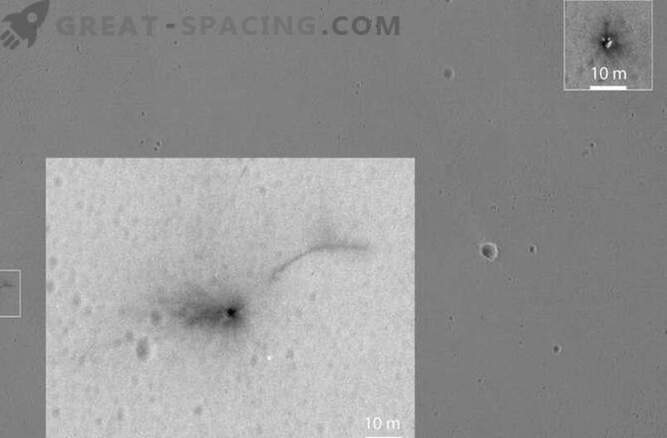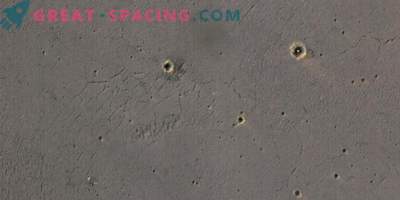
Unsuccessful landing of the Schiaparelli landing module in the “Schiaparelli Crater” may bring new discoveries.
Scientists and engineers of the Martian descent vehicle of Europe Schiaparelli were planning that by this time, after the successful completion of the mission on the planet, he had to turn off the power.
Instead, Schiaparelli fell to the surface on October 19, falling victim to a possible software failure. This resulted in a premature release of the parachute and the closing of the thruster.
At the European Space Agency, they tried to take this event in a positive way, considering the test flight to be just a test run before a larger and more important project. This should be the rover, which is going to land on the red planet in 2021 to search for life.
While studying the causes of the collision of the joint Russian-European Mars rover ExoMars, the scientists turned their attention to the newest crater of the planet. They are wondering whether it is possible to use this opportunity to glance at the “freshly dug” geological environment.
Schiaparelli's 660-pound fell to the ground at a speed of more than 180 miles per hour, leaving a small crater about 8 feet in diameter and 20 inches deep.
A satellite orbiting Mars is trying to get a top view of this event.
“We could consider a shallow crater capable of providing us with some information about the properties of the Martian surface, but this is difficult,” writes astronomer from the University of Arizona and lead scientist of the high resolution camera Mars Reconnaissance Orbiter (MRO) Alfred Mc-Ouen. Other scientists are more pessimistic.
“Even if the crater is small, it can still be interesting to explore. But in our case, it is likely to be contaminated with all kinds of materials from the planting module and its fuel. So I would not recommend directing efforts to explore the place from this point of view, ”said project scientist Hakan Svedhem.
NASA and Europe released the first high-resolution MRO images of the crash site on Thursday. The pictures themselves were taken on Tuesday.
“The first observation from a high-resolution camera does not show a topography indicating the presence of a crater,” said representatives of the European Space Agency in a statement. “By combining the data with future observations, we will be able to provide an accurate method of verification.”
Schiaparelli fell not far from the planned landing site - on a flat area, about 2 degrees south of the equator, known as the Plateau of Meridian. This region does not occupy high positions in scientific lists of places where life could develop and survive, but it is still of interest for study.
NASA's Opportunity Mars Rover has been studying the Plateau of Meridian for almost 13 years. But it is too far away and cannot visit the newest basin of Mars, created after the impact - the Schiaparelli Crater.










































